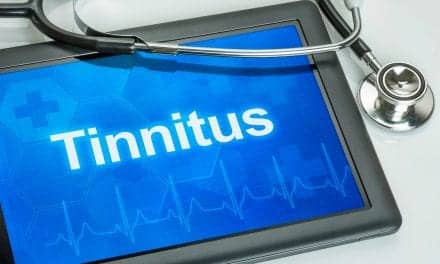Summary: Researchers developed a biosensor capable of quickly and accurately detecting gene mutations responsible for hearing loss and other diseases, using advanced Surface-Enhanced Raman Spectroscopy technology.
Takeaways:
- Innovative Technology: The biosensor combines nanoparticles and silver nanoarrays to provide precise and rapid diagnosis of gene mutations linked to hearing loss, cancer, Alzheimer’s, and thalassemia.
- High Sensitivity and Speed: The SERS-based biosensor outperforms existing diagnostic tools in terms of sensitivity, stability, and detection speed, enabling quick results from minimal sample sizes.
- Wide Applications: The biosensor has potential applications in various fields, including medical diagnostics for genetic mutations, food inspection, and water quality testing, aiming to create comprehensive gene mutation libraries for rapid and cost-effective diagnostics.
A team of scientists from the University of Sharjah say they have invented a biosensor capable of detecting the gene mutations responsible for the loss of hearing.
The sensor, comprising nanoparticles and nanoarrays of silver, stands out in its ability to provide a precise and rapid diagnosis not only of the genes behind hearing loss, but also of other ailments like cancer, Alzheimer’s, and thalassemia, the scientists confirm.
Information about the innovation is included in a research paper published recently in the International Journal of Biological Macromolecules.
The scientists tout their innovation as vital, endowing it with “the potential that may transform global medical diagnostics by integrating SERS biosensors into diagnostic devices, allowing for the screening of numerous infections,” according to Mounir Gaidi, Sharjah University’s Professor of Applied Physics, and a co-author.
How the New Biosensor Works
SERS, or Surface-Enhanced Raman Spectroscopy, is an analytical technique which medics use to identify, detect, and diagnose molecules at very low concentrations. The scientists praise SERS as an analytical technique, but they underscore that their newly developed biosensor comes with various parameters that make it a much stronger and speedier detection tool.
The rapidity of their innovative biosensor, the scientists maintain, makes it vital not only to detect genes hampering hearing, but they claim it could also help to predict deadly diseases “such as cancer, Alzheimer’s, thalassemia and so on”.
The invention of the new biosensor comes as medical doctors and diagnostic specialists still haggle over how to unravel SERS enhancement mechanism in disease detection. “In our research paper, we designed simple, cost-effective SERS biosensor which could detect the deafness causing gene mutant DNA which was obtained from the saliva of affected persons.”
The scientists’ innovative biosensor outpaces available instruments in terms of time it takes to diagnose hearing loss genes. It is also more stable, more sensitive with the ability to detect various gene mutations.
“In addition, the developed biosensor outweighs for its stability, reproducibility in signal detection, label free as well as highly sensitive for low detection levels. Our study aims to bring in creation of library files for deafness mutations to facilitate clinical diagnostics in a simple and rapid approach,” says Gaidi.
The scientists acknowledge that innovating biosensors that can rapidly detect infections is not an easy task.
“Finding rapid biosensors to sense disease-causing infections is like searching for the grand pursuit in the medical diagnostic field. These rapid techniques can sense it very fast within a few minutes, no longer requiring a long waiting queue to get results,” Gaidi says. “Our research presents the basic understanding of utilizing SERS as a bio-analytical device in the detection of deafness mutations in real time. It highlights the rapid, ultra-sensitive, and cost-effective SERS biosensing of real-time deafness mutations in the GJB2 gene.”
The study’s lead author, Arwa Alsafadi, says one main target of the research is to set up an inventory that comprises data associated with GJB2 – gene mutations leading to hearing loss conditions. “This research paves the way for the creation of SERS library files associated with GJB2 genetic mutations related to hearing loss, facilitating rapid diagnosis.”
Research assistant, Krithikadevi Ramachandran, a co-author, is upbeat about the finding, saying the invention could transform the field of medical diagnosis. “Our findings on SERS label-free biosensing to screen individuals with hearing loss associated with GJB2 gene mutations have the potential that could possibly revolutionize medical diagnostic technology in the near future.”
Diagnosing Deafness and Diseases
On the benefits the medical community could make of the authors’ biosensor, Kais Daoudi, professor of physics and a co-author, said the innovation could be put to a variety of applications vital to diagnose infections not only those leading to deafness but also to other hard-to-bear diseases.
“The potential applications of these fabricated biosensors are extensive, encompassing the detection of mutations associated with deafness and the capability to detect various other genetic mutations once functionalized,” says Daoudi. “Integrating these biosensors into a hand-held portable device could enhance their use alongside medical diagnostic tools, supported by analytical platforms for real-time applications.”
Asked about the immediate practical application of their project, co-author and Associate Professor Abdelaziz Tlili, said, “The main practical goal of our project was to go with rapid SERS sensing of viral proteins, DNA, biomolecules that are responsible for causing any pandemic outbreaks, and infections related to human beings’ organs.”
The authors are planning further investigations as they believe their research has the potential to establish a foundation for more efficient and widely accessible technologies, fostering innovation across multiple fields, according to Soumya Columbus, a post-doc and a co-author.
Gaidi said he envisioned several practical applications for their finding, including the direct SERS detection of various gene mutations responsible for numerous human health issues.
“Additionally, this technology can be applied in diverse sectors such as food inspection and water quality testing to screen for low levels of organic substances. We aim to contribute to the creation of a comprehensive library for different types of gene mutations, starting with those causing hearing loss and extending to other health issues. This approach promises to provide rapid and cost-effective diagnostics.”
Featured image: The newly developed label-free silver nanoparticle SERS sensor capable of detecting DNA of GJB2 genes causing hearing loss. Credit: https://doi.org/10.1016/j.ijbiomac.2024.129381





